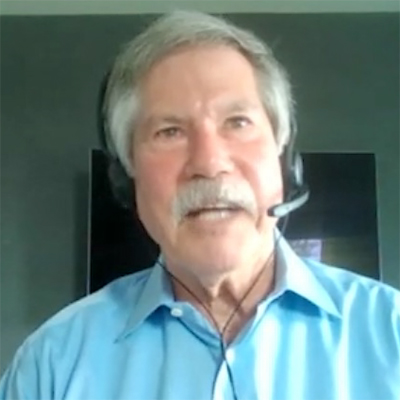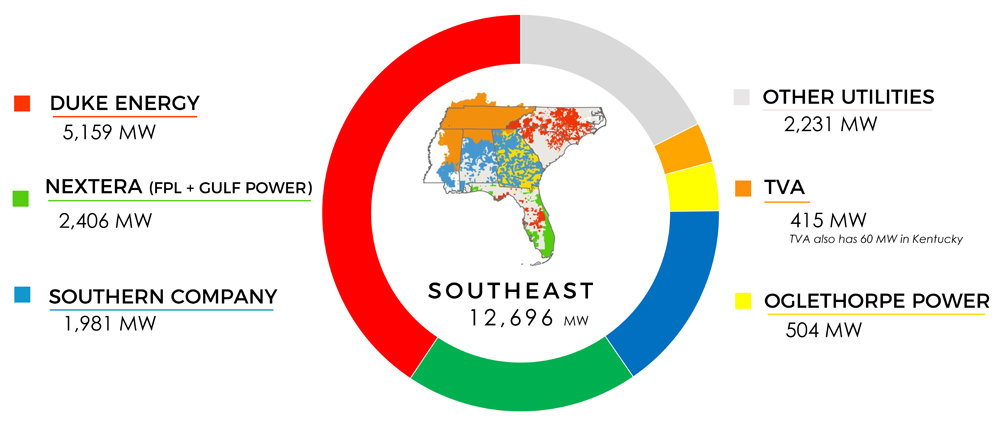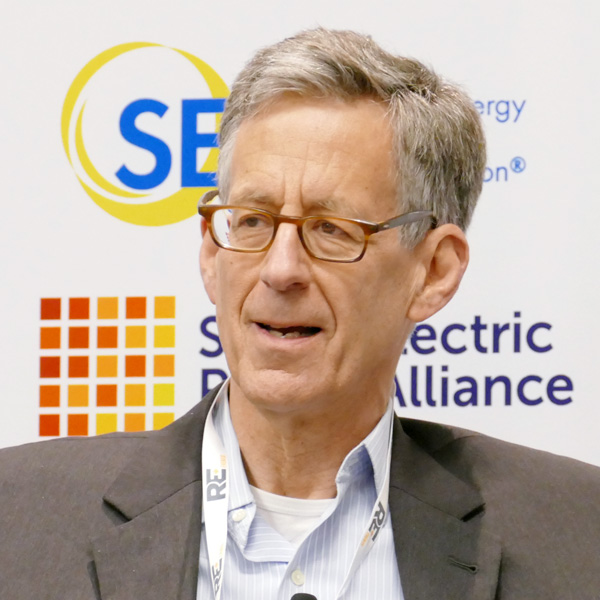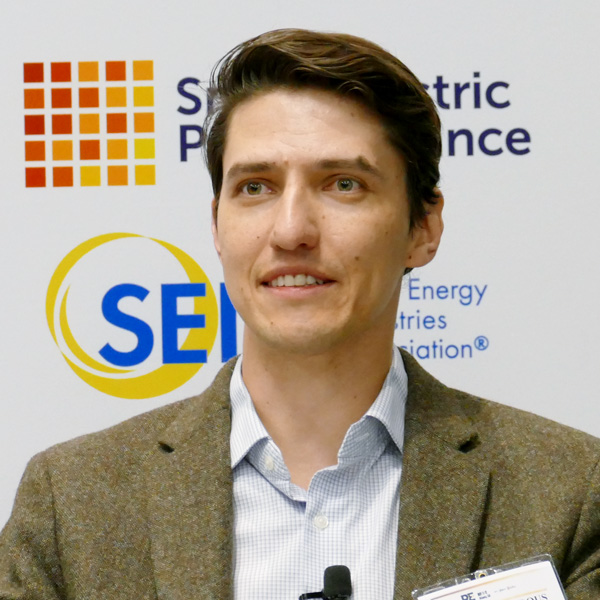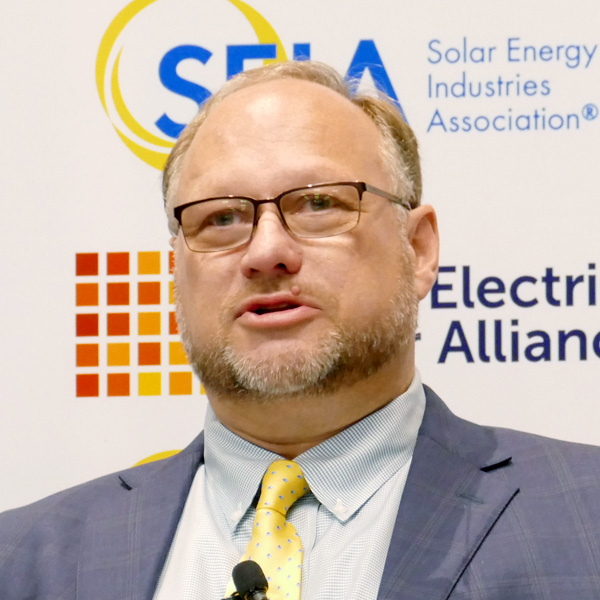FERC last week approved MISO’s separate-but-equal postage stamp rate divided between its Midwest and South footprints for some of its major transmission buildout. The Thursday order gives MISO a clear-cut cost allocation for its long-range transmission plan’s (LRTP) first two cycles of projects (ER22-995).
The 100% postage stamp-to-load rate will be used to divide costs on MISO’s $10 billion long-range transmission package, the first of four portfolios the RTO plans to recommend. (See MISO Updates Stakeholders on $10B Long-range Tx Package.)
MISO will limit cost sharing on the first half of its LRTP projects to MISO Midwest, where the projects will be physically located, thus shielding its southern states from the transmission costs. The grid operator has said the allocation design is temporary and that it will seek approval for a new cost-allocation design when it begins studying transmission needs in MISO South and increasing its Midwest-to-North transfer constraint in a few years. (See MISO Seeking New Tx Cost Allocation for Major Buildout.)
FERC said that MISO’s proposal to limit regional cost assignments is fair because it follows the commission’s cost-causation principles that benefits be roughly commensurate with allocation. The agency cited a Brattle Group analysis commissioned by MISO that showed the benefits of Midwestern transmission projects would be overwhelmingly confined to the Midwest unless the RTO secures more transfer capability between the subregions. (See MISO Finalizes Long-range Tx Cost Sharing Plan.)
The design “appropriately reflects the transfer limits between the Midwest subregion and the South subregion,” the commission said.
FERC also noted that MISO replicated its established cost allocation from its 2011 Multi-Value Projects to divvy up long-range transmission costs.
MISO’s clean energy organizations called the allocation design a “prudent interim solution to the transfer limits.” However, industrial customers argued that the RTO didn’t present enough evidence that it will allocate costs commensurate with benefits. They also derided MISO’s method of analyzing the first cycle of transmission projects as a portfolio instead of individually and said applying a uniform postage-stamp-to-load rate is clumsy because project benefits fluctuate over time.
The Mississippi Public Service Commission agreed with separating the Midwest from the South but asked that FERC not consider the postage stamp rate as the default method when MISO begins prescribing projects for its South region. The PSC said it would protest the rate as not specific enough if it were applied to Southern projects.
FERC disagreed and said the postage stamp is an appropriate allocation tool. The commission quoted itself from Order 1000 and reminded industrial customers and the PSC that a postage stamp method is “appropriate where all customers within a specified transmission planning region are found to benefit from the use or availability of a transmission facility or class or group of transmission facilities, especially if the distribution of benefits associated [therewith] is likely to vary considerably over the long depreciation life of the transmission facilities amid changing power flows, fuel prices, population patterns and local economic considerations.”
The commission also reminded Mississippi that the postage stamp rate is already the default allocation style under MISO’s past Multi-Value Projects, even though that portfolio predated MISO South’s integration and none of those project costs were ever assigned to the South. FERC said it considered the PSC’s ask a collateral attack on its past rulings.
FERC pointed out that the U.S. Seventh Circuit Court of Appeals has held that FERC “need not ‘calculate benefits to the last penny, or for that matter to the last million or ten million or perhaps hundred million dollars,’ but rather must have ‘an articulable and plausible reason to believe that the benefits are at least roughly commensurate with’ the allocation of the costs.”
The commission also blessed MISO’s portfolio approach to the LRTP and again referenced itself, this time quoting from its acceptance of the RTO’s portfolio style for its 2011 Multi-Value Projects.
“The portfolio approach will help [MISO] to prioritize its transmission expansion projects in such a way as to ensure global benefits from the projects afforded regional cost sharing and maximize the number of system users who will share in those benefits,” the commission said.
FERC also dismissed as premature some stakeholders’ concerns that MISO would design a different and more favorable cost allocation for the South, thus violating FERC’s cost allocation principle that inconsistent allocations must not be applied to the same class of projects. The commission said that was speculation because MISO has yet to develop the cost allocation it plans to apply for projects concerning MISO South.
Christie’s Cautious Concurrence
Commissioner Mark Christie wrote separately to concur with the order, hinting that MISO may not be doing enough to ensure thorough cost allocation.
“In a large, geographically sprawling transmission entity — MISO stretches from the Gulf of Mexico to Canada — it simply makes sense to allow for more granular cost allocation arrangements that may be subregional rather than imposing an identical cost allocation framework across the entirety of MISO,” Christie wrote.
However, he expressed misgivings with the “pure socialization” of the postage stamp rate and said he hoped MISO and stakeholders could arrive at a more granular allocation for the second half of the long-range transmission effort.
“While MISO’s case for postage stamp cost allocation is weak, I do not believe there has been a showing that this method is unjust and unreasonable,” he said, adding that he was ultimately swayed by the Organization of MISO States’ support of the allocation’s design.
Christie said he is concerned that Brattle’s benefits spread analysis rested on MISO’s internal benefit evaluation of its Multi-Value Project portfolio, and not an outsider’s view of the projects’ benefits. The Brattle Group’s Johannes Pfeifenberger “apparently accept[ed] the benefit-cost ratios in MISO’s 2017 report as self-proving,” Christie said.
He added that the Brattle Group should not accept MISO’s benefit claims “on faith,” especially when billions of dollars are at stake.
“There is nothing in the record to indicate whether MISO’s 2017 analysis was ever introduced into evidence in a rate case or other formal proceeding; whether discovery by other parties ever took place to glean information about the methods, bases and benefit calculations of the 2017 analysis; whether it was ever sponsored by a witness who had to take the stand and be cross-examined on the report by lawyers who knew how to conduct cross; or whether other parties had the opportunity to put their own expert witnesses, friendly and hostile, on the stand who could testify about the MISO analysis,” Christie wrote. “Indeed, ideally, a third-party report without a witness who can authenticate it and be cross-examined on it would not even be admitted as evidence in any serious evidentiary proceeding … the evidence in support of assigning billions of dollars in new costs to consumers should certainly get the same scrutiny as in a routine rate case involving far lower amounts of costs.”
Christie urged “state regulators and all affected stakeholders throughout MISO, especially those representing both residential and industrial consumers, to scrutinize very closely the planning criteria and cost allocation for future [long-range portfolio cycles] as well as claims of projected benefits used to justify regional cost allocation proposals because billions of dollars of consumer costs will be allocated here.”
